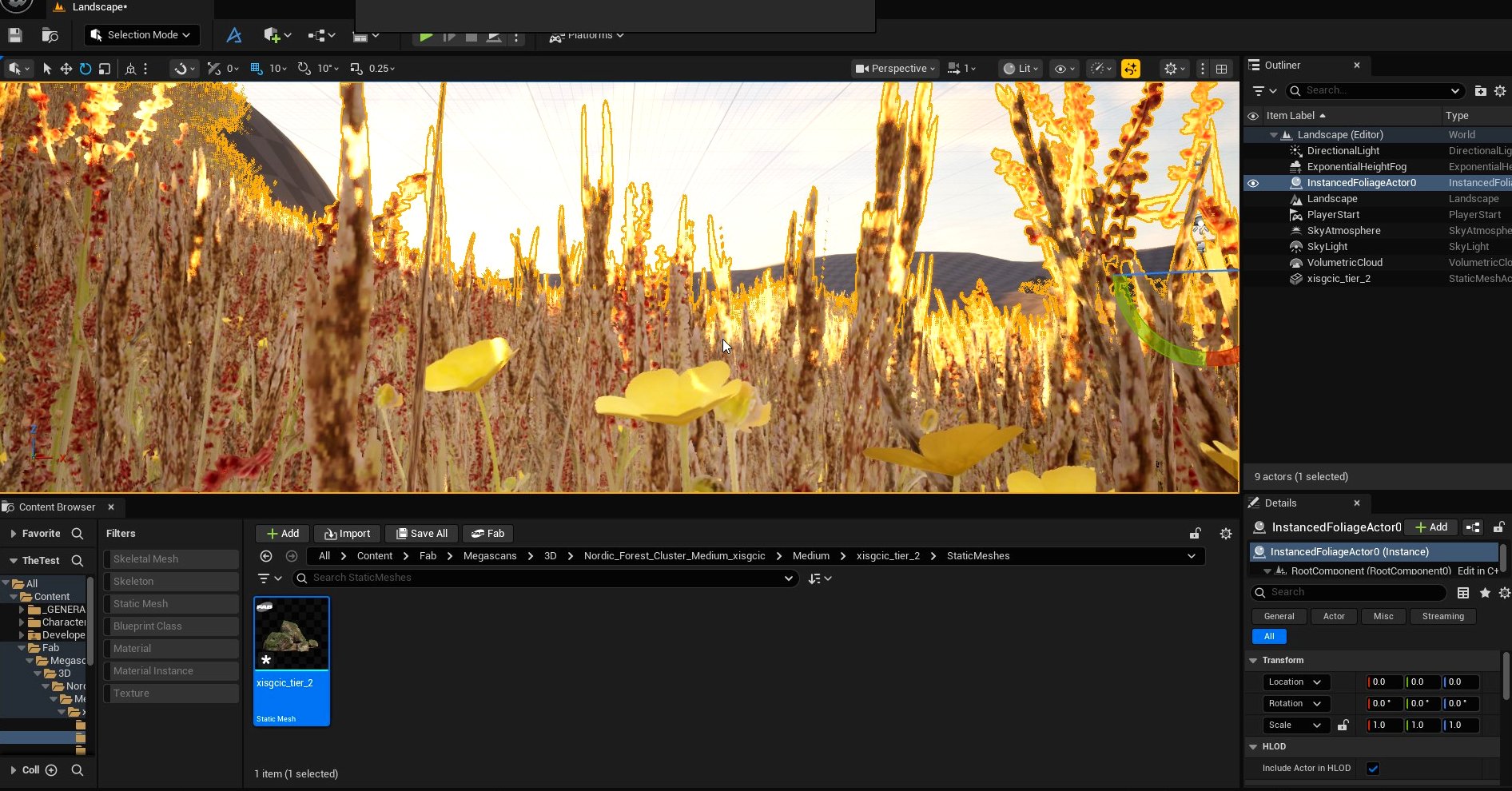Today was one of those days that reminded me why I love game development—even after all these years. I had the pleasure of teaching some university staff in the UK about the intricacies of landscape and foliage creation in The Brass Gate. There’s something uniquely satisfying about watching someone’s eyes light up as they start to understand the power and potential of these tools.
The landscape editor in The Brass Gate is a bit like a painter’s palette, but instead of oils or watercolors, you’re working with dynamic lighting and detailed foliage assets. It’s not just about making things look pretty (though that’s always a nice bonus); it’s about creating a world that feels alive, a space that players want to explore and get lost in.
One of the highlights of the session was discussing foliage placement. I find it fascinating how the subtleties of where you put a bush or a tree can drastically alter the feel of an environment. It’s like setting a stage for a play—each element has its part to play in creating mood and atmosphere. I encouraged the staff to think about not just what the player sees, but what they might hear or feel as they move through the environment. The rustle of leaves, the crunch of gravel underfoot—these details make a world immersive.
We also dove into World Position Offset (WPO) for materials, which is a bit of a nerdy passion of mine. Using WPO to create swaying grasses is a simple trick, but it adds so much life to a scene. It’s like giving your landscape a pulse. When the wind picks up, the grasses dance, and suddenly, the world doesn’t just exist statically—it breathes.
Creating landscapes and foliage can be incredibly rewarding, especially when everything clicks into place and your scene comes alive. Watching the staff experiment with these tools was a joy. They started to see how minor adjustments could lead to major visual rewards, and it was clear that many of them were getting hooked on the process.
For anyone out there working in Unreal Engine or diving into indie development, I highly recommend spending some time on your landscapes. Not just for aesthetic reasons, but for storytelling. Every rock, tree, and shadow can tell part of your story. And sometimes, it’s the silent parts of a game that speak the loudest.
If you’re curious about the landscape editor or want to see some of these ideas in action, you can check out more at [www.thebrassgate.com](http://www.thebrassgate.com). It’s always a work in progress, but that’s the beauty of it, isn’t it? The journey of creation never really ends; it just keeps evolving with us. #indiedev #UnrealEngine #gamedev #TheBrassGate

No Responses